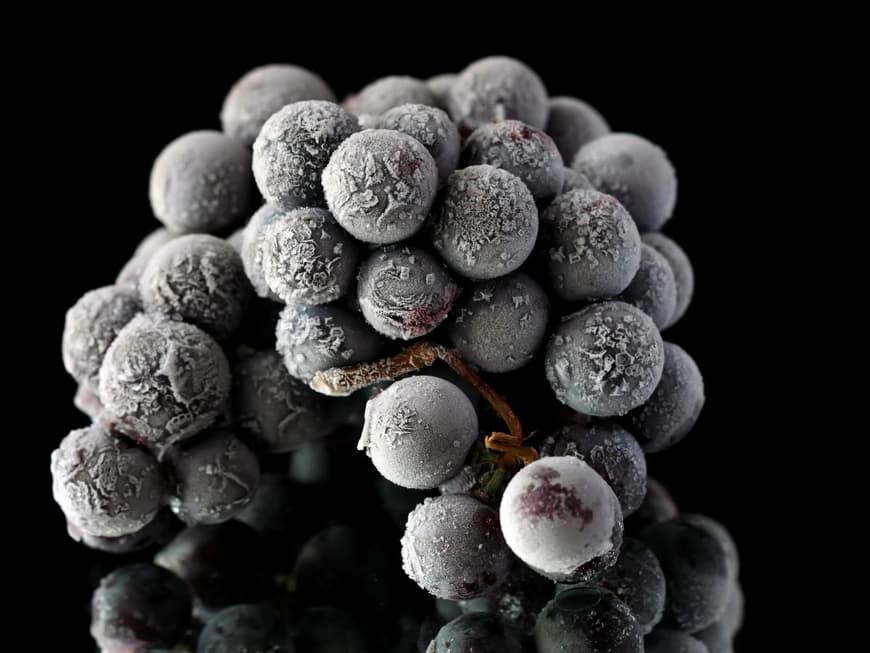
Why "ice" wine?
Ice wine does not earn its name from its icy drinking temperature-depending on the taste, between nine and twelve degrees Celsius is recommended. The warmer it is enjoyed, the more aromas caress the nose and palate. But why then "ice" wine? The name comes from the frosty temperatures at which the grapes of a real ice wine are harvested. The winemakers put up with an uncomfortable morning for their masterpiece, as they comb through their vineyards in the early, dark hours of the morning at no more than minus 7 degrees Celsius (ideally minus 10 to minus 12 degrees Celsius) and hand-pick the precious grapes.
But the cold hands and feet are a price gladly paid for the collected "treasure". The frozen grapes are pressed the same morning. Only in this state does the water contained in the grapes remain frozen. The pressed result is a highly concentrated must, as the sweetest juice of the grape has a lower freezing point than water.
Traditional German product "ice" wine
Even if the thought of the morning harvest in what feels like arctic temperatures sends a cold shiver down our spines, we Germans can't complain about our geographical climate conditions for once. In only a few countries do winter temperatures fall below the essential minus 7 degrees Celsius.
Even though the Roman writer Pliny first reported on wines made from frozen grapes as early as 44 AD, Germany can now look back on a no less proud, almost 200-year ice wine tradition: 1829 was a sad wine year. When the frustrated winegrowers of Dromersheim nevertheless set out in winter to harvest the frozen grapes, at least as food for the animals, they discovered the extraordinary sweetness for the first time. The successful further course of history is quickly recounted: today, Germany can call itself one of the most important nations for ice wine production, surpassed only by Canada. Credit where credit is due: in 1982, as part of an amendment to the German wine law, ice wine was also given its own predicate level. A minimum must weight was set, which must be at least equal to that of a Beerenauslese and varies depending on the growing region.
The current harvest was on a knife's edge
In 2015, many were (once again) mourning the beauty of a white Christmas. German winegrowers, on the other hand, were (once again) worried about their ice wine. Due to the unusually high temperatures in December, the Rheingau winegrowers, for example, are already fearing the third winter in a row without an ice wine harvest. A brief historical comparison shows why this is so unusual: the failures in the Rheingau in 2013 and 2014 were only the second and third in 80 years. Never before has there been a failure in two consecutive years. And now the third was imminent.
The ice wine harvest for the 2015 vintage threatened to fail repeatedly. After an extremely mild start to the winter, some patient winegrowers still managed to harvest the coveted grapes. The sudden frost in January gave the winegrowers a record-breaking late harvest between January 18 and 19, 2016, contrary to expectations.
A delicate drop
Ice wine always cuts a fine figure, both as an aperitif and as an accompaniment to dessert. A combination with fruity desserts or ice cream is particularly recommended. The combination with blue cheese is somewhat more daring, but no less impressive. Salty and bitter mix with sweet and fruity in an unusual composition - a real treat for the palate!
